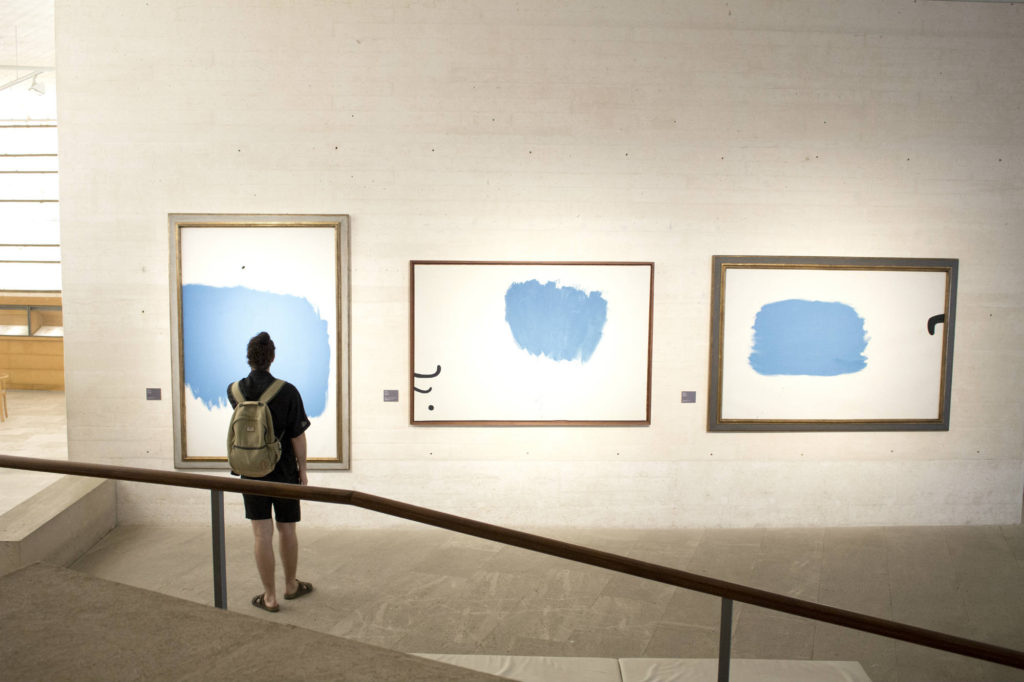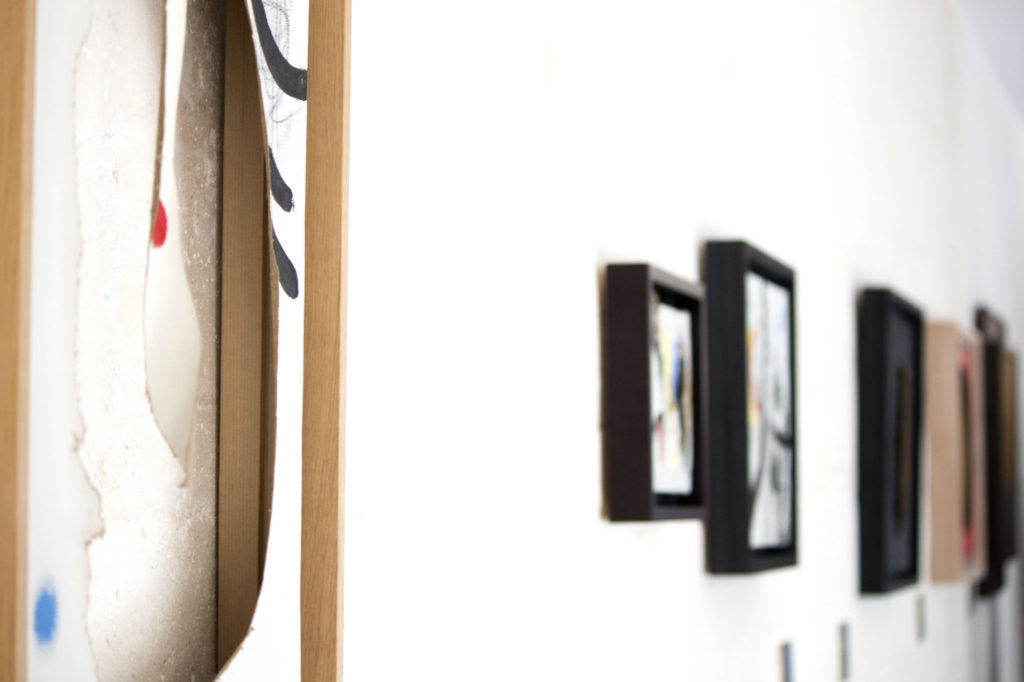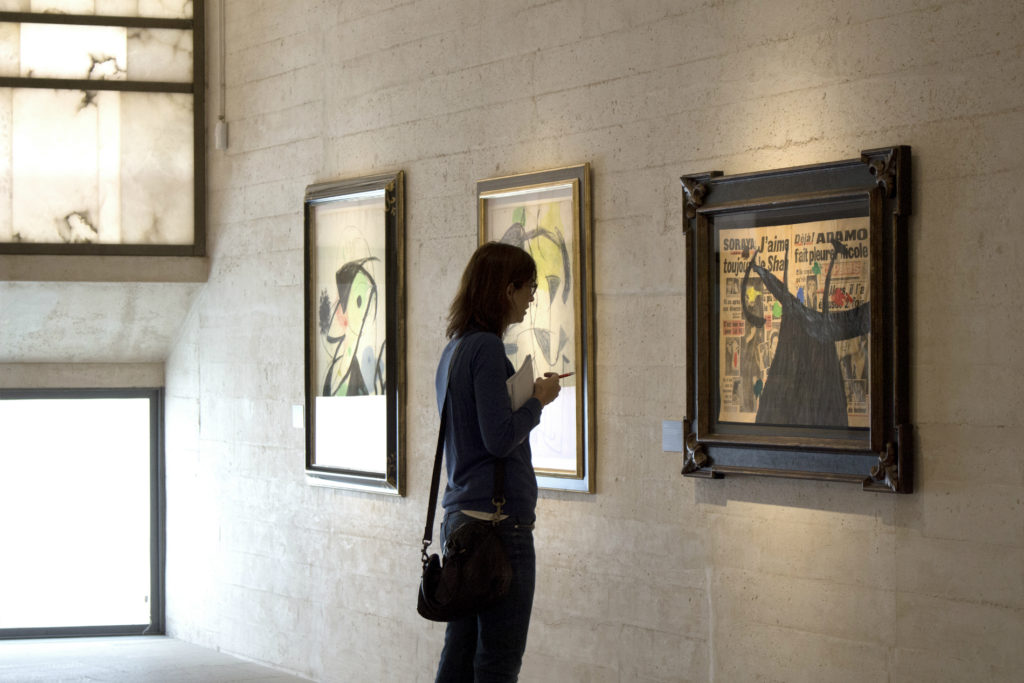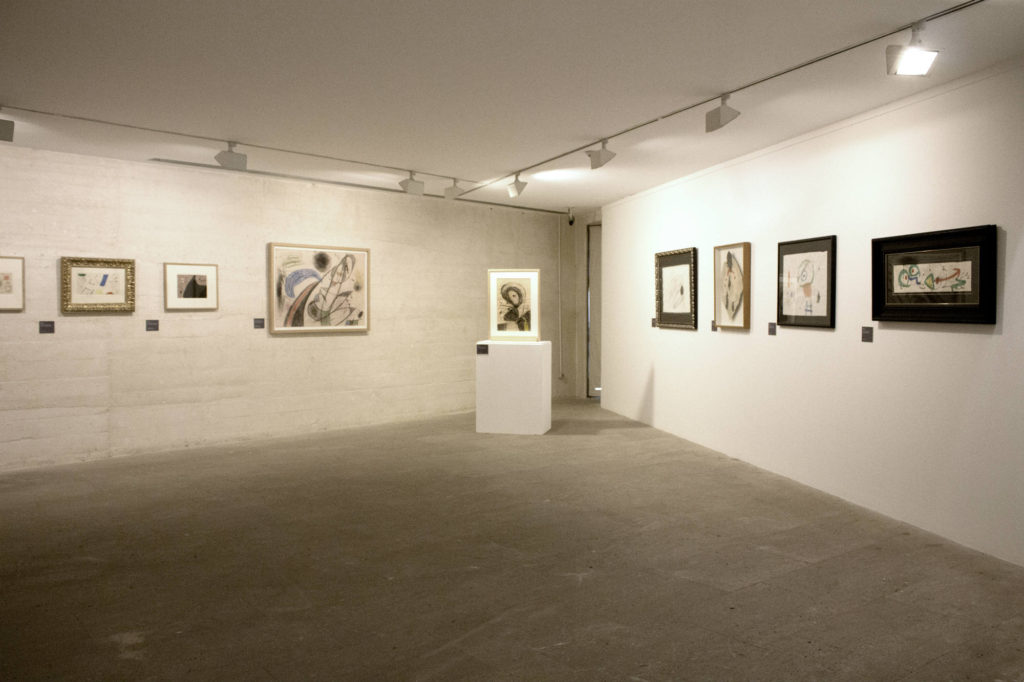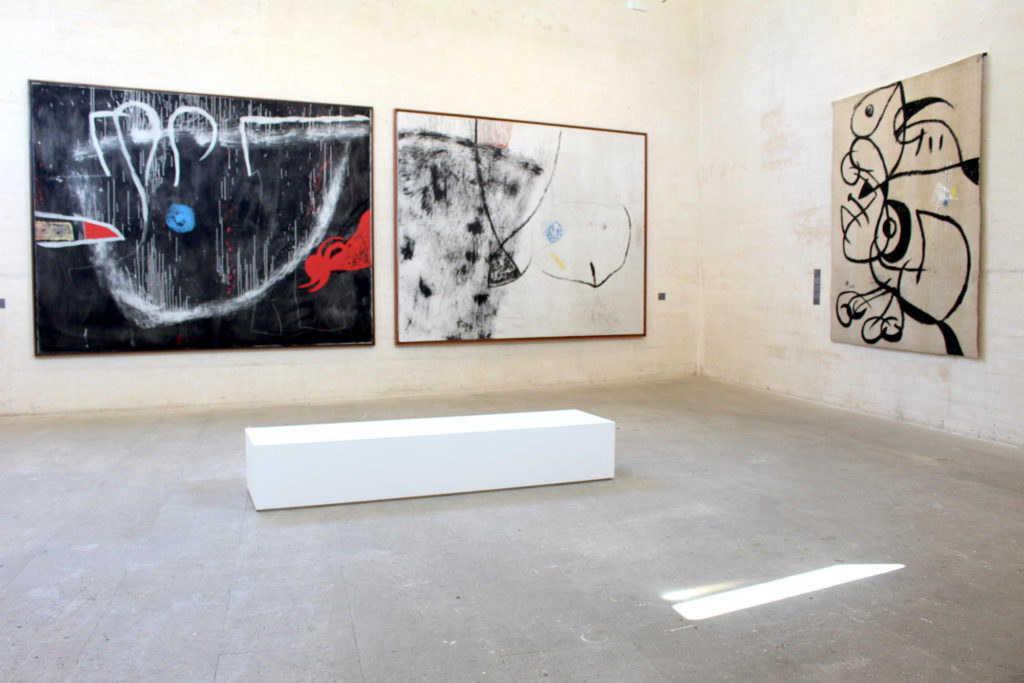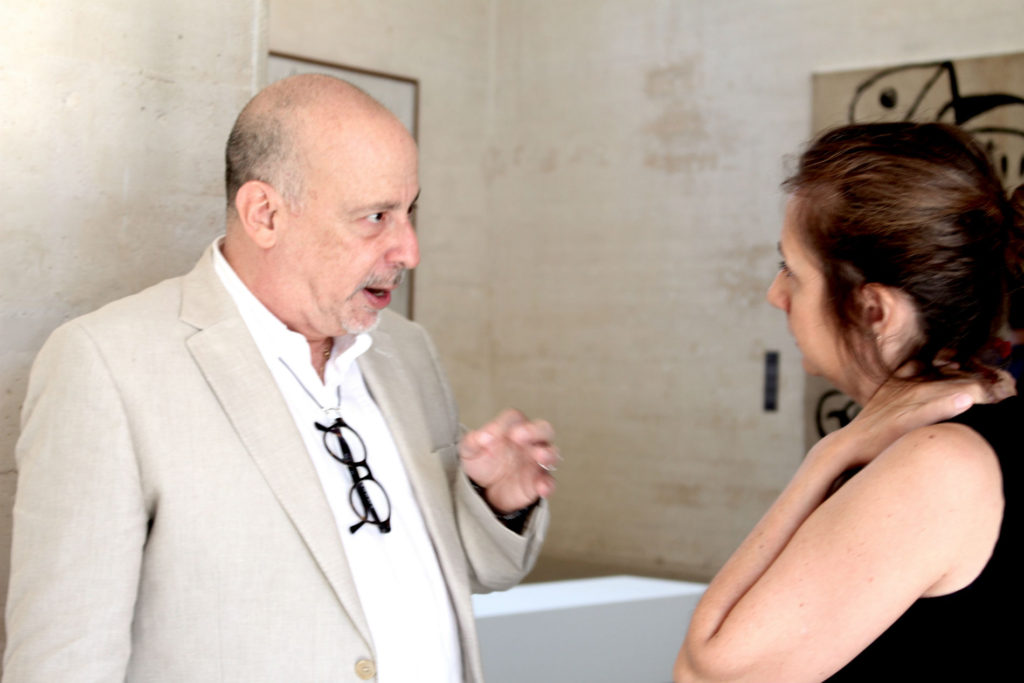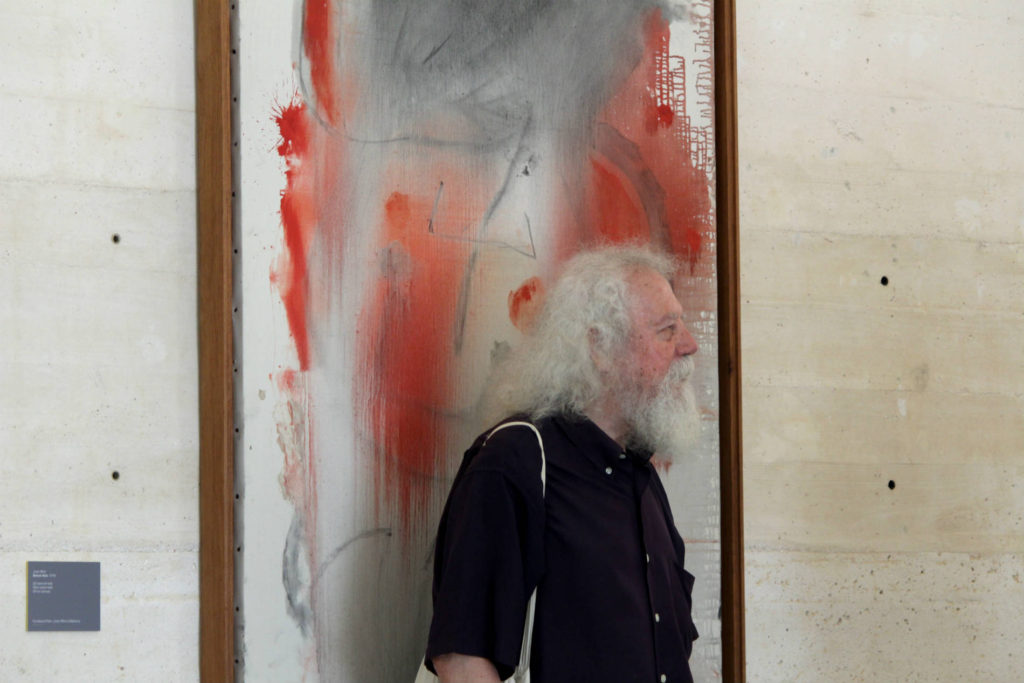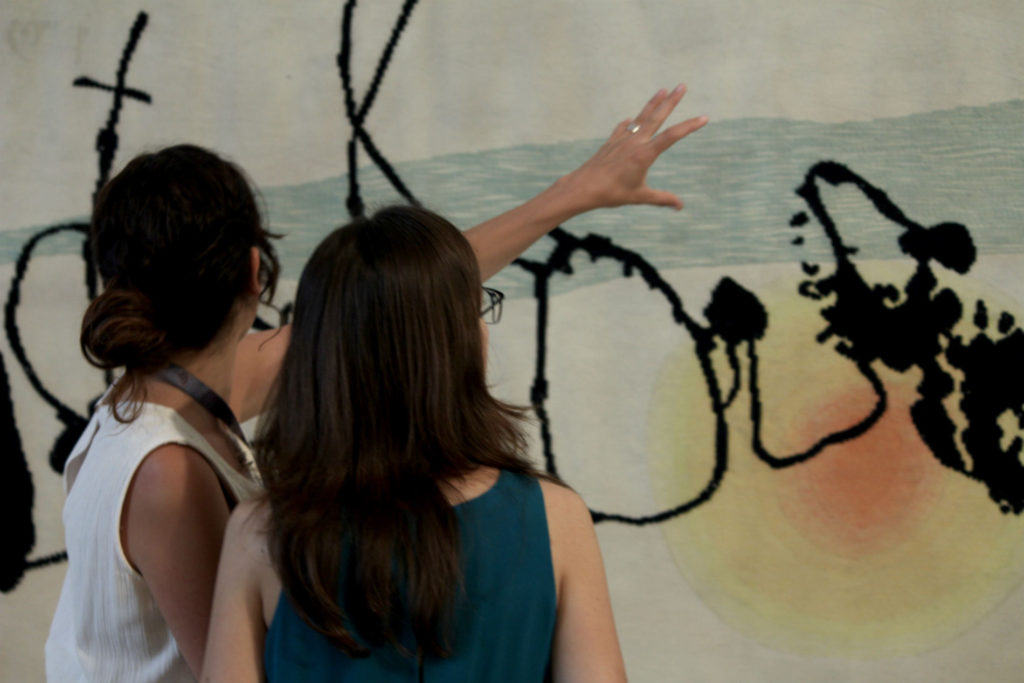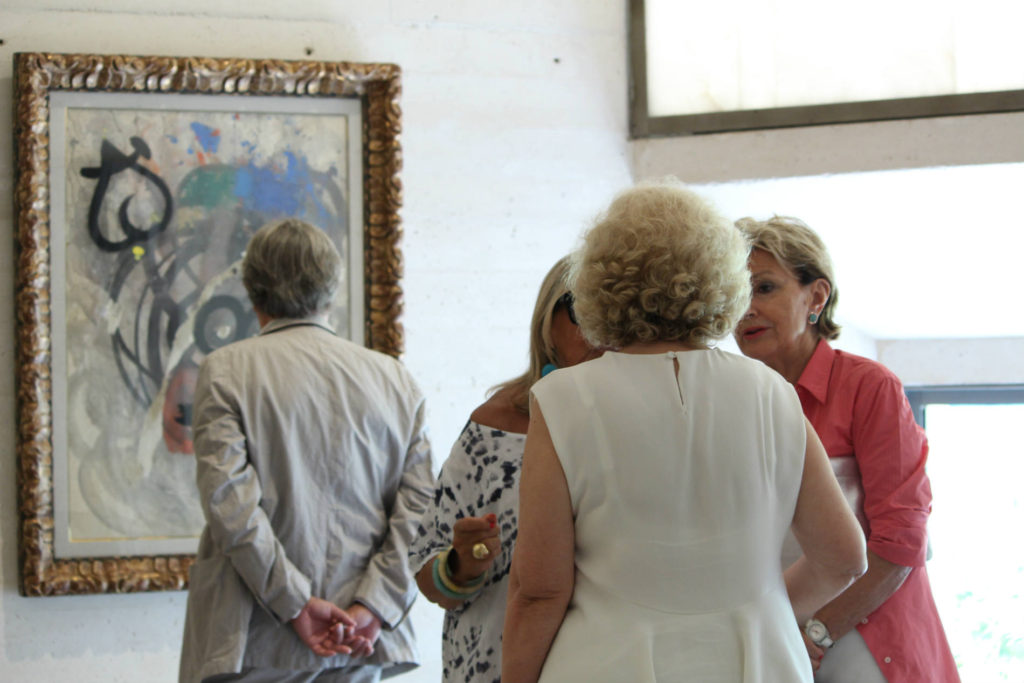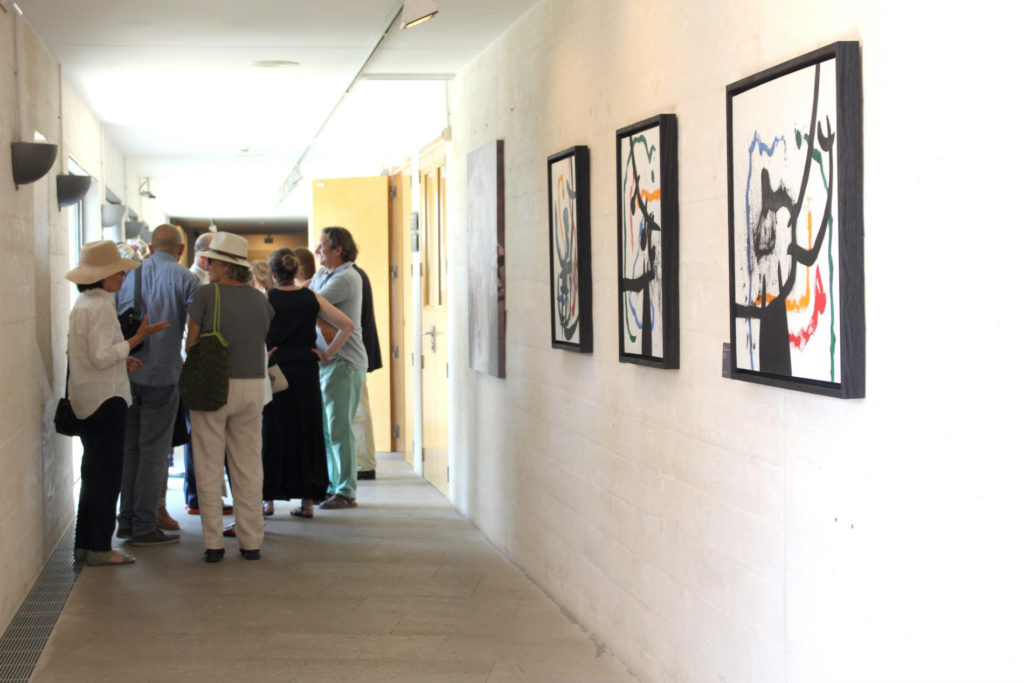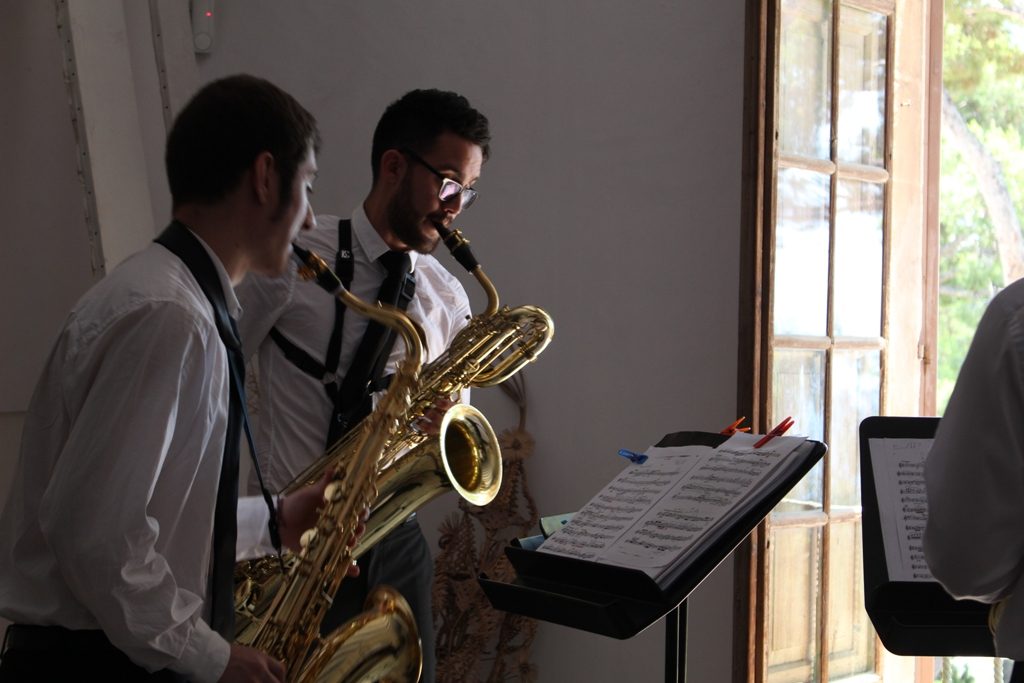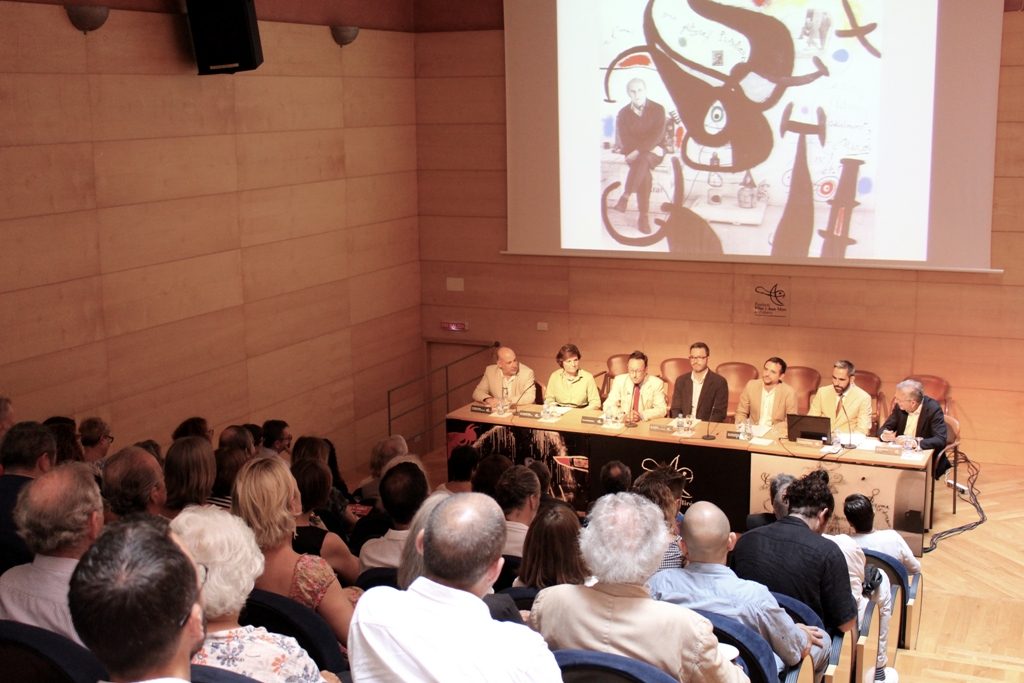
Museo Nacional Centro de Arte Reina Sofía
Madrid
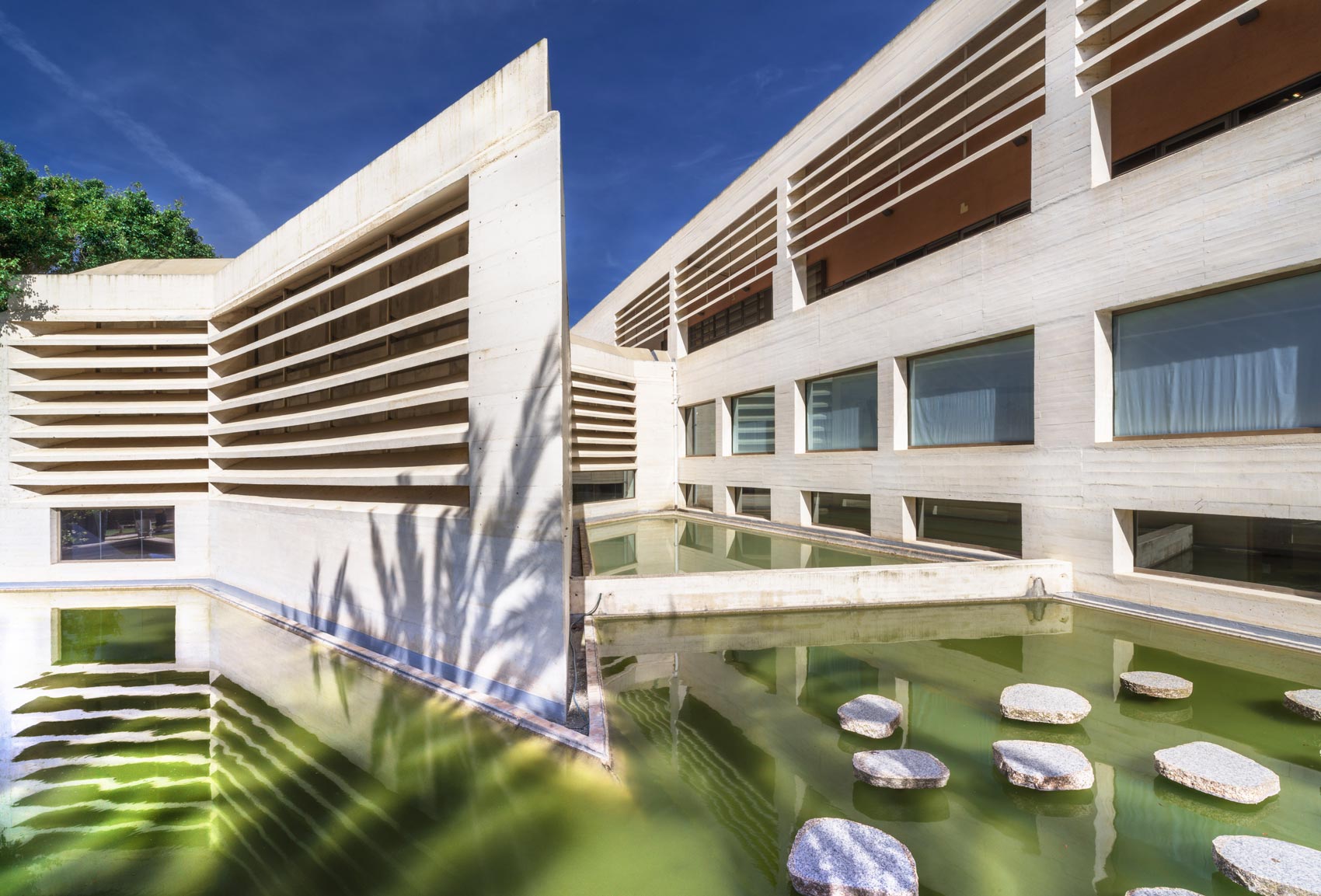
Moneo building
L'edifici Moneo, seu actual de la Miró Mallorca Fundació, es va inaugurar el 1992. Projectat per l'arquitecte Rafael Moneo és el resultat de la donació de Pilar Juncosa, vídua de Miró, a la Ciutat de Palma.
-
Exhibition space
- Space Estrella
- Space Cúbic
- Space Zero
-
Dates
- 24 June 2017 — 28 January 2018
-
Inauguration
- 23 June 2017
- 19:00
Unseen Miró
"Unseen Miró" commemorates the 25th anniversary of the opening of Moneo's building on 1992, current headquarter of the Foundation. with a selection of works displayed here for the first time, shown from a singular perspective. Some of the works have never been exhibited before and some were even uncatalogued.
The exhibition is based on a simple notion: to recapture the transgressive force of a series of little known works that left the artist’s studios in Mallorca never to return until today. The 95 works exhibited here were produced in the Sert Studio and Son Boter in the 1960s and 70s, before passing into the hands of friends, prestigious institutions and private collectors in many different places. “Unseen Miró” has managed to reunite these unique works in the place where they were originally conceived, the studios of the foundation that Miró made possible, in a round trip that celebrates the artist’s gift to the city.
Un Miró salvatge i contestatari conviu amb un altre de reflexiu i abstret
“Unseen Miró” is a tribute to the rebellious artist who still had much to say. This was an artist who questioned his work, looking forward into the future at what he had yet to produce. The exhibition is made up of a unique selection of works from his last stage as an artist, revealing the true Miró.
It was in Mallorca that Miró found the peace and quiet that he needed to elude the demands of international fame and to devote himself fully to his art. At an advanced age and yet with an attitude that was more dynamic and freer than ever, he managed to renew his whole plastic approach to art, posing unexpected artistic challenges. A savage rebellious Miró coincided with another more pensive self-absorbed one: gesture and instinct contrasted with order and care, and the Catalan seny (reason) with rauxa (impulse).
The period covered by this exhibition coincides with two big retrospective exhibitions: one held at Barcelona’s former Santa Creu Hospital (November 1968–January 1969) and the other at the Grand Palais in Paris (March 17th–October 13th 1974), an event that would mark a turning point through Miró’s reassessment of his artistic work, leading to one of his most fruitful periods which, in turn, conditioned his remaining creative life and the work he would go on to produce with increasing urgency: the contents of the foundation collection.
On the same dates, Miró also held his first solo exhibition in Palma at Sala Pelaires in October 1970. He would go from being practically unknown to members of the public in Palma and from being referred to as “Pilar’s husband” to being equally famous at home as an artist as he was beyond Spain’s borders.

Pintura, 1968
A reinterpretation by Miró
Visitors are welcomed to the exhibition “Unseen Miró” by a photograph of Joan Miró shown in Son Boter. In it, he can be seen sitting on a packing case in his studio, surrounded by work still in progress, objects and bits of possible assemblages that would one day become sculptures. It is an instant of creativity frozen in time.
Interventions to an existing work of art, made by the artist or by other artists, was typical of the 1960s and 70s, a period when Miró called his work into question and embarked on a process of artistic renewal.
The starting point for this work is a photograph taken on a visit to Son Boter in 1966 by one of Miró’s friends, Josep Planas Montanyà, who also bore photographic witness to local affairs. Miró singled out the photograph when he went to Planas’ studio, asking him to make a large canvas print of it. He then used the image as the background to his own work.

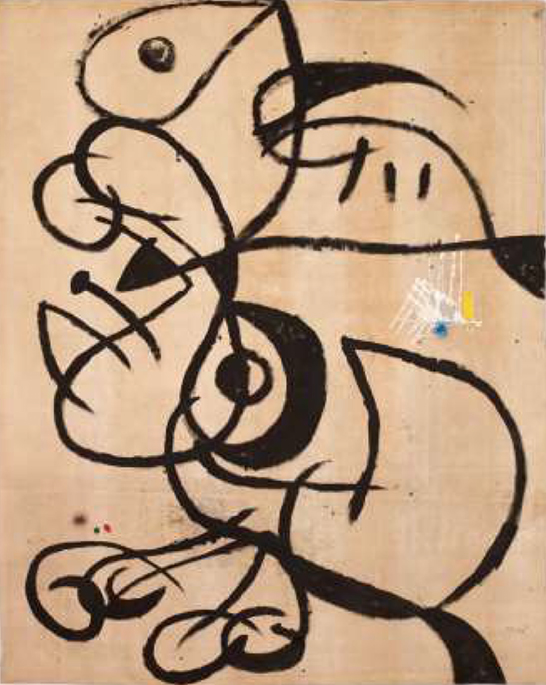
The most experimental creative process
From the 1960s, Miró’s approach to painting became more gestural and direct. He let himself be guided by accidents and random elements, using supports and materials of all kinds. He painted on cow skin, cork sheets and plastic packaging. One example is the painting on canvas shown in the Espai Cúbic from the collection of the Barcelona Fundació Joan Miró.
As a support for the painting, Miró chose a large piece of canvas cloth that was in his studio. He re-used it to paint on, working on the unmounted canvas on the floor, as shown in photos of the Sert Studio. Unlike other works, preceded by a long process of reflection and preliminary drawings, on this occasion he started out by working directly on the canvas, using his whole body and even treading on it or leaving marks from the tiled floor.
The approach he took was to focus on the material. His sober use of big brushstrokes and simple signs left the canvas exposed, revealing its disciplined weft and rough opaque texture: the qualities that had attracted him in the first place and inspired him to work on it.
"El projecte de Pelaires cerca despertar tota aquesta gent”, Joan Miró (1969)
Miró in Mallorca
“Unseen Miró” contains works of art and documentary materials that illustrate Miró’s relationship with Sala Pelaires, including a drawing that he did on the first page of the guest book of this art gallery, inaugurated in Palma in 1969 with a joint exhibition featuring work by Miró, Picasso and Tàpies. The artist, who tended not to make much of a show of himself in public, visited the gallery shortly after the opening to enquire about an initiative that, in his own words, sought to ‘wake up all those people’.
The first solo exhibition of Joan Miró’s work at Sala Pelaires took place in 1970, followed by “Homenatge a Joan Prats” (“Tribute to Joan Prats”) in 1972 and the “Mallorca Series” in 1973, whose invitation, catalogue and maquette for the catalogue’s cover can be seen here. Sala Pelaires would become the focal point of the contemporary art world in Palma and a springboard to modernity, thanks to Miró’s intercession by deciding that work by he and ‘his friends’ (figures as important as Alexander Calder or Josep Llorens Artigas) would be shown there. These developments would not only influence local perceptions of the artist but, as we have seen, major changes would also occur to his own work.
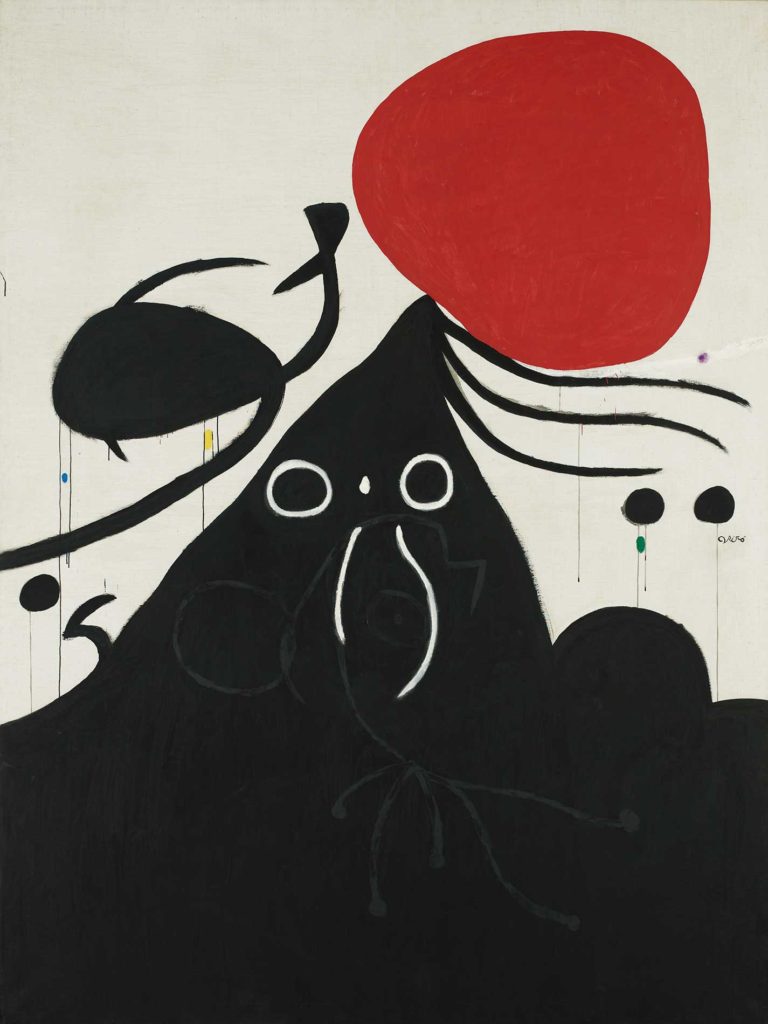
Femme devant le soleil I
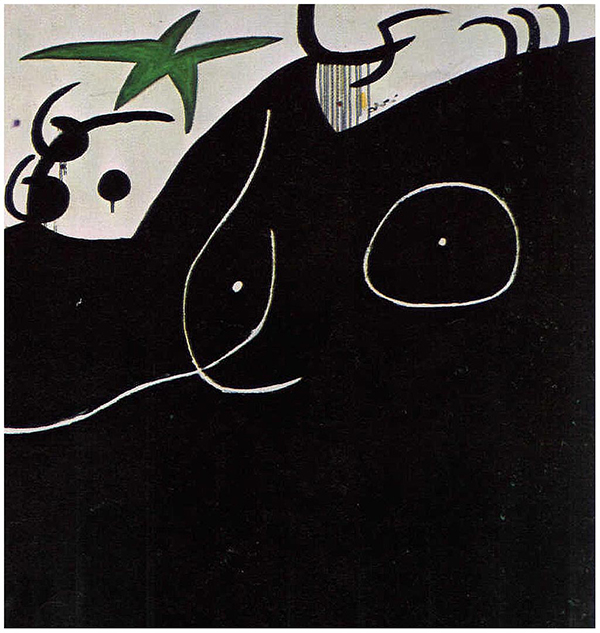
Femme devant l'étoile-filante III
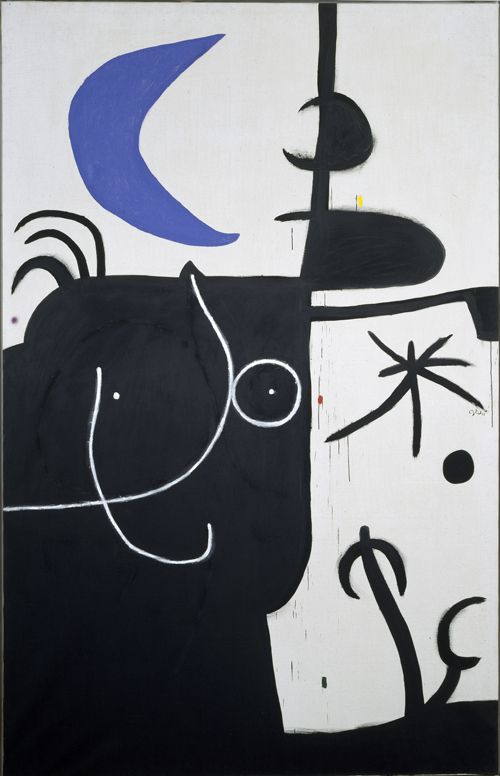
Femme devant la lune II
The hitherto “unseen” triptychs, seen in conjunction
Two large triptychs stand out particularly in the Espai Estrella, shown together for the first time in Spain. One of them is made up of three 1973 works from the Reina Sofía Art Centre – Painting I, Painting II and Painting III -, only previously exhibited together in Frankfurt and Zurich from 2015 to 2016. The other is made up of the three big 1974 canvases from the Fundació Joan Miró in Barcelona – Femme devant le soleil I, Femme devant la lune II, and Femme devant l’étoile-filante III -, not shown together since the Grand Palais exhibition of the same year.
Joan Miró incorporated influences from his immediate past, from recent trips to Japan in 1966 and 1969. The simplicity of the brushstrokes is particularly striking, aimed at making a maximum impact with minimum means. The Paintings clearly reflect an exercise in introspection and inner dialogue.
As for the triptych from the Barcelona Fundació Miró, the sun, moon and a five-point star are immediately recognizable, although these symbols so typical of Miró were incorporated at a late stage of the creative process. Indeed, they are only lightly sketched in the photographs of the three paintings taken in Son Boter studio, entering into dialogue and creating space between one another. Thus it is not the symbols that construct and delimit the painting, but the figures and black areas. These form a simultaneous portrait and landscape, evoking the horizons of Miró’s first teacher, Modest Urgell, from whom he also inherited the red circle, moon and star.
Oriental influences are clearly evident in the prevailing use of black, the calligraphy and the empty spaces so strongly present in his 1970s work, together with the eye that reveals the presence of a figure. Black progressively takes over the painting, covering virtually the whole surface and relegating the background white and interplay between the symbols to second place.
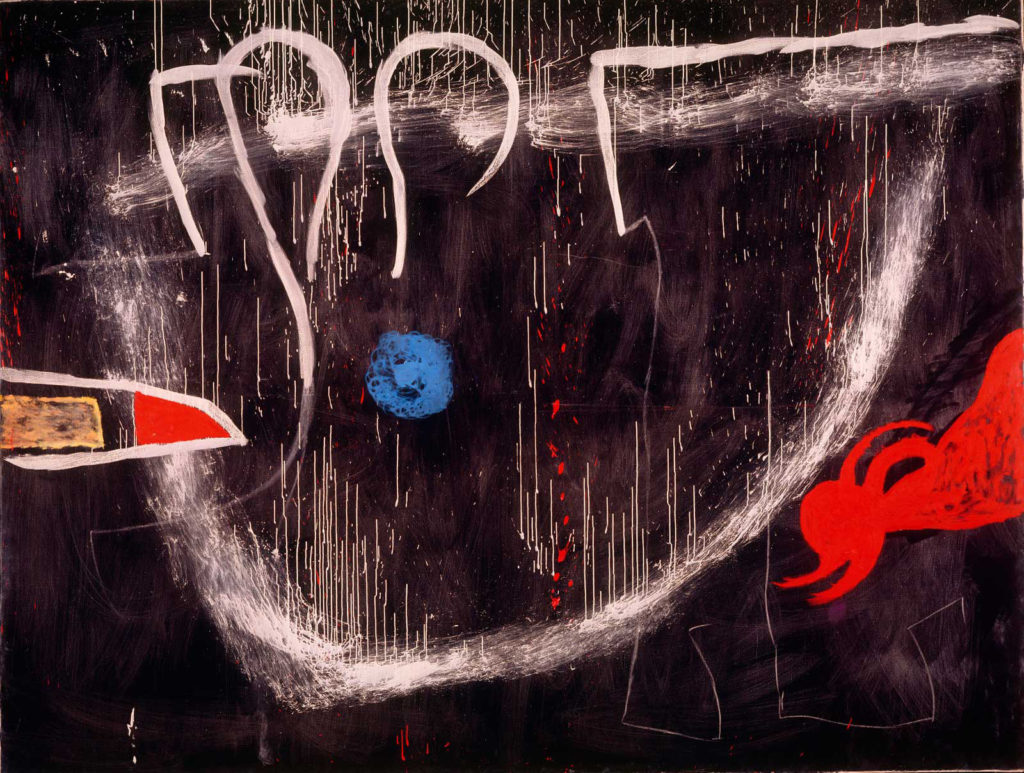
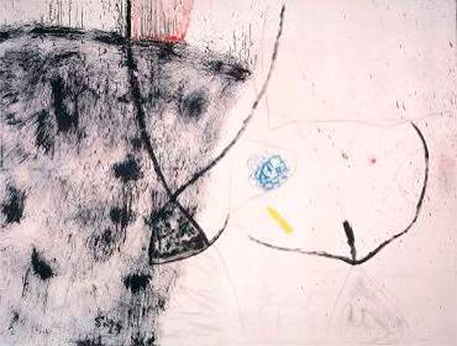
The upside-down canvases
Two of the most outstanding works from the art collection of the Fundació Pilar i Joan Miró are exhibited here in a completely new way, following extensive research into Miró’s creative process and into visual documents that show the evolution of the two big canvases in the studio.
The two canvases are the biggest works in the collection, exhibited upside down for the first time. Their format is the same as the big triptych Blue I, Blue II and Blue III, painted in 1961 in the Sert Studio, and they were very probably originally conceived to form a diptych. Miró prepared the canvases and positioned and worked on them at the same time, using the same colours. He even repeated one motif (the blue spiral), placing it in the same area of both paintings, and the dialogue between the two works is evident.
The artist described his concern when he realized that something about them did not work. In his quest to identify the problem, Miró pinned a question mark to the canvas. The almost physical sense of unease that the question mark generated was appeased once the works had been turned round, just as they are shown here.
The two upside-down canvases are symbolic of the Fundació Pilar i Joan Miró’s art collection, reflecting an instant in the artist’s creative process and a kind of cross section of his thoughts. They also sum up the spirit of the artist’s studios, suspended in time and evoking moments of uncertainty as a work slowly emerged.
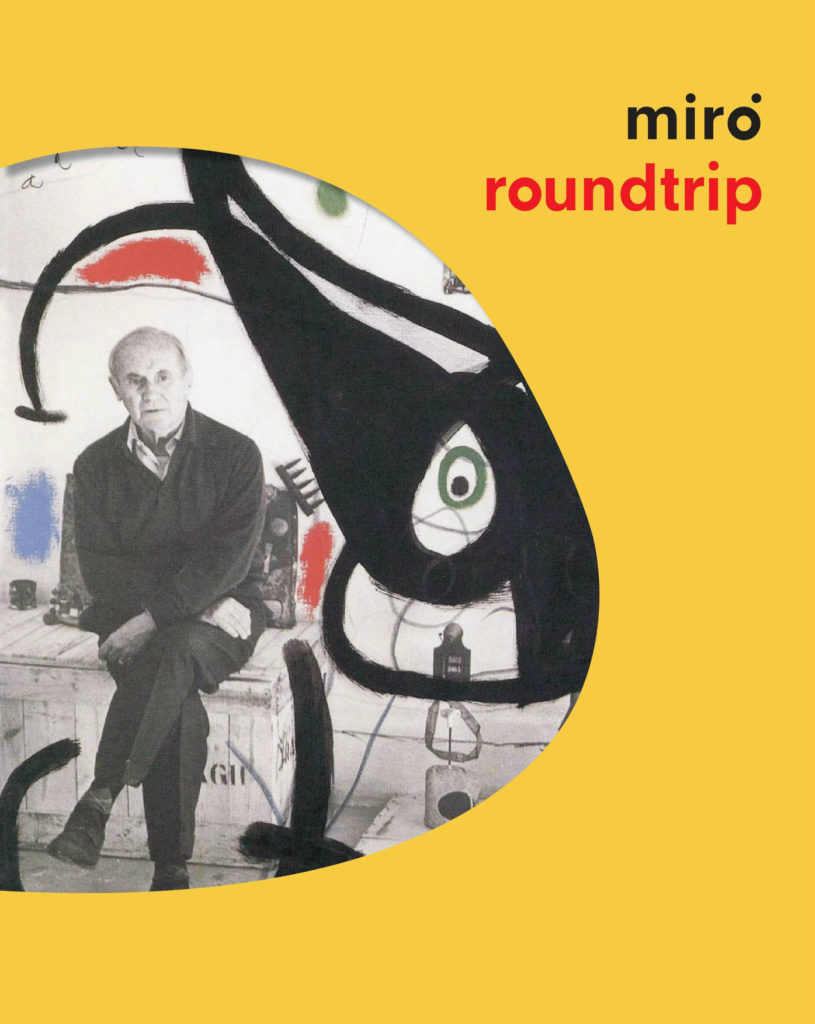
Miró Round Trip. The catalogue
The catalogue that accompanies the exhibition is entitled Miró Round Trip, in reference to the return journey that the works of art from the studios have made. It is designed to act as an independent publication in its own right, with articles by Joan Punyet Miró and Francisco Copado Carralero, an essay on Miró’s 1970s work by the acclaimed researcher Robert Lubar, and an unusual look at the materials and techniques used by the artist through a detailed analysis by Enric Juncosa Darder, the Fundació’s restorer.
Making-off of the exhibition “Miró never seen”
Creative and unpublished making-off of the exhibition’s montage.
